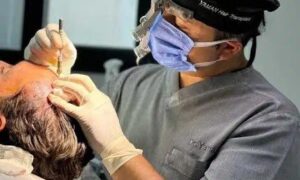Talking about pelvic health shouldn’t be uncomfortable. Many individuals of all ages can experience conditions involving one or more pelvic organs. These include the bladder, urethra, rectum, intestines, and reproductive organs (vagina, uterus, ovaries, prostate, etc.). Strong pelvic floor muscles and connective tissue are also considered key components for good health because they relate to sexual performance and control bladder and bowel functions.
Take, for instance, rectocele prolapse. This condition occurs when the tissue between the rectum and the vagina weakens or tears. As a result, the rectum will push into the vaginal wall. Posterior vaginal prolapse is also called a rectocele (REK-toe-seel).
Rectocele Symptoms
No matter your age or sex, you can develop a rectocele. Generally, rectoceles are diagnosed in women over age 60. Pregnancy, childbirth and menopause can all cause rectocele prolapse.
You’re not alone if you’ve never heard “What is rectocele?”
A small rectocele that bulges less than 1 inch into the vagina would not cause symptoms. However, vaginal and rectal symptoms can develop with larger rectoceles.
Rectocele symptoms can include:
- a bulge of tissue protruding through the vaginal opening
- pain or discomfort during sexual intercourse
- constipation
- rectal pressure
- bowel movement difficulty
- difficulty controlling the passage of stool or gas from the rectum
- lower back pain that can get more severe for women during the evening
How Long Can You Live With a Rectocele?
Medical experts say that you can live a normal lifespan with rectocele prolapse. However, moderate or severe posterior vaginal prolapses might be uncomfortable and affect your quality of life. The good news is that several options are available, including acellular dermis products that provide structural support to the pelvic organs.
There is also a device you can insert called a vaginal pessary to give support to prolapsed organs. Or your doctor may recommend doing pelvic floor exercises to strengthen the pelvic floor muscles.
Some healthcare professionals advise taking fiber supplements, stool softeners and adequate hydration to ensure easier bowel movements and lessen straining. Hormone replacement therapy is also recommended to manage rectocele symptoms in post-menopausal women.
Rectocele Repair Via Rectocele Surgery
Sometimes, your symptoms may be severe, and rectocele repair is necessary to restore your quality of life. Rectocele surgery may be advised for advanced cases. The procedure can be performed by a urologist, gynecologist or colorectal surgeon and involves the removal of the herniated tissue. Sutures are then used to reinforce the supportive wall of tissue between the vagina and the rectum.
Rectocele repair can be approached from four angles, including vaginal, abdominal, rectal or perineal. Every case is unique and will depend on the severity of the rectocele prolapse, the age of the patient and whether the symptoms are predominantly affecting the vagina or rectum.
Most patients who undergo rectocele surgery experience symptom relief after their procedure.
Rectocele symptoms are more common than you’d think, and there is no shame in asking your doctor, “What is rectocele?” Today’s advancements in technology, techniques and treatments offer women several options in managing their symptoms or choosing rectocele repair.
Pelvic floor health at every age plays a major role in overall well-being. If you notice symptoms of pelvic floor, rectocle, or other prolapse issues, ARMS Medical might be able to help. Contact their team today!





























